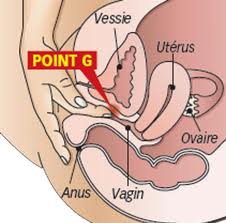VULVA, LABIA, and CLITORIS
(A) External View, closed
(B) External View, open and flushed.
The Vulva is the external sexual organ of
women.
The above view (A) shows the
external view of the female vulva as normally
seen when the woman is standing up. View
(B) shows the vulva when it is opened, and
from the top down one can clearly see the
Veneris Mons, clitoral hood, clitoris, and labia
minora. There are many questions about the
vulva on alt.sex, and this FAQ will begin to
attempt to answer some of these.
Vulva
The external female genitals are collectively
referred to as The Vulva. All of the words
below are part of the vulva.
Mons Veneris
The mons veneris, Latin for "hill of
Venus" (Roman Goddess of love) is the pad
of fatty tissue that covers the pubic bone
below the abdomen but above the labia. The
mons is sexually sensitive in some women
and protects the pubic bone from the
impact of sexual intercourse.
Labia Majora
The labia majora are the outer lips of the
vulva, pads of fatty tissue that wrap around
the vulva from the mons to the perineum.
These labia are usually covered with pubic
hair, and contain numerous sweat and oil
glands, and it has been suggested that the
scent from these are sexually arousing.
Labia Minora
The labia minora are the inner lips of the
vulva, thin stretches of tissue within the
labia majora that fold and protect the
vagina, urethra, and clitoris. The appearance
of labia minora can vary widely, from tiny
lips that hide between the labia majora to
large lips that protrude. The most common
metaphor for the labia minora is that of a
flower. Both the inner and outer labia are
quite sensitive to touch and pressure.
Clitoris
The clitoris, visible in picture (B) as the small
white oval between the top of the labia
minora and the clitoral hood, is a small body
of spongy tissue that is highly sexually
sensitive. Only the tip or glans of the clitoris
shows extrernally, but the organ itself is
elongated and branched into two forks, the
crura, which extend downward along the
rim of the vaginal opening toward the
perineum. Thus the clitoris is much larger
than most peole think it is -- about 4" long,
on avergae. The clitoral glans or external tip
of the cltoris is protected by the prepuce, or
clitoral hood, a covering of tissue similar to
the foreskin of the male penis. During sexual
excitement, the clitoris may extend and the
hood retract to make the clitoral glans more
accessible. On some women the clitoral
glans is very small; other women may have
large clitori that the hood does not
completely cover.
Urethra

The opening to the urethra is just below the
clitoris. It is not related to sex or
reproduction, but is instead the passage for
urine. The urethra is connected to the
bladder. Because the urethra is so close to
the anus, women should always wipe
themselves from front to back to avoid
infecting the vagina and urethra with
bacteria.
Hymen

(A) (B) (C) (D) (E)
The above illustrations show the area
between the labia minora. From top to
bottom can be clearly seen the clitoris,
urethral opening, and vaginal opening. A, B,
and C show vaginal openings with a normal
hymen, a membrane that partially covers the
opening. The hymen is the traditional
"symbol" of virginity, although being a very
thin membrane, it can be torn by vigorous
exercise or the insertion of a tampon.
Illustration D shows an imperforate hymen
that completely closes the vagina; this rare
condition requires surgical intervention to
provide for a normal flow of blood once
menstruation begins. Illustration E is of a
vagina in a post-partum woman (one who
has given birth).
Perineum
The perineum is the short stretch of skin
starting at the bottom of the vulva and
extending to the anus. The perineum in
women often tears during birth to
accomodate passage of the child, and this is
apparently natural. Some physicians may cut
the perineum preemptively on the grounds
that the "tearing" may be more harmful than
a precise scalpel, but statistics show that
such cutting in fact may increase the
potential for infection.
FEMALE INTERNAL GENITALIA
VAGINA, UTERUS, OVARIES, AND G-
SPOT



No comments:
Post a Comment